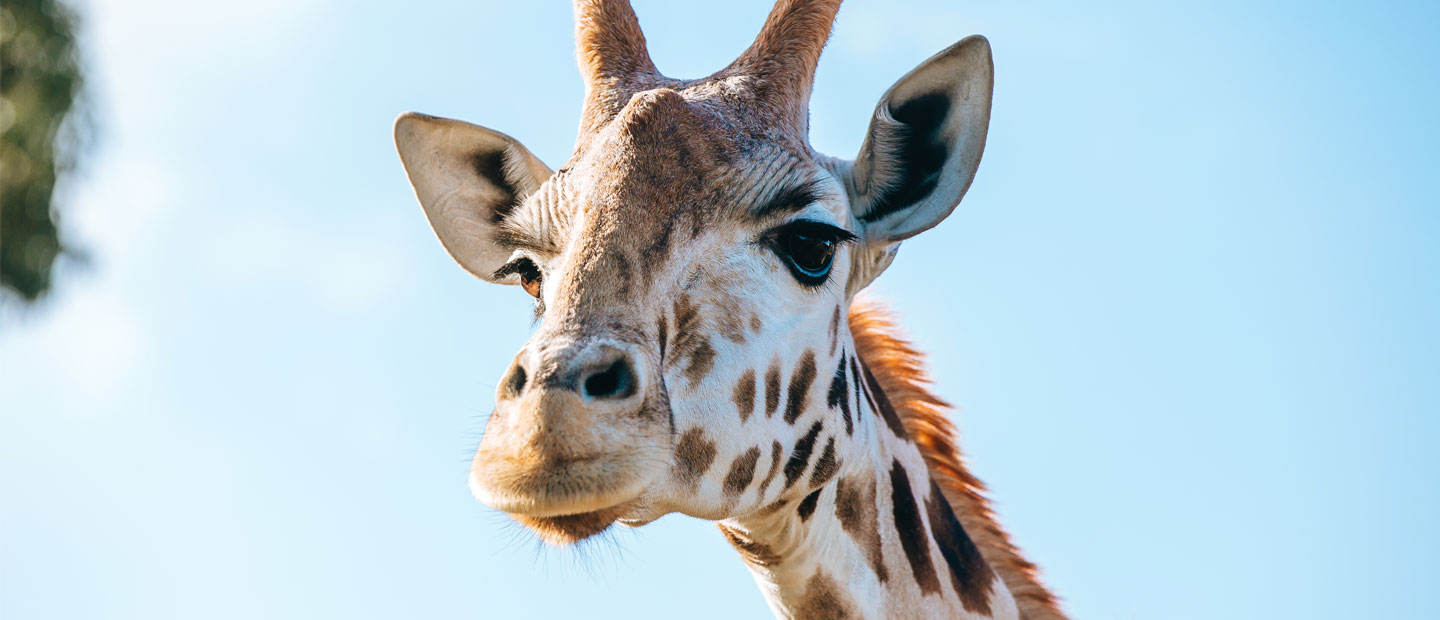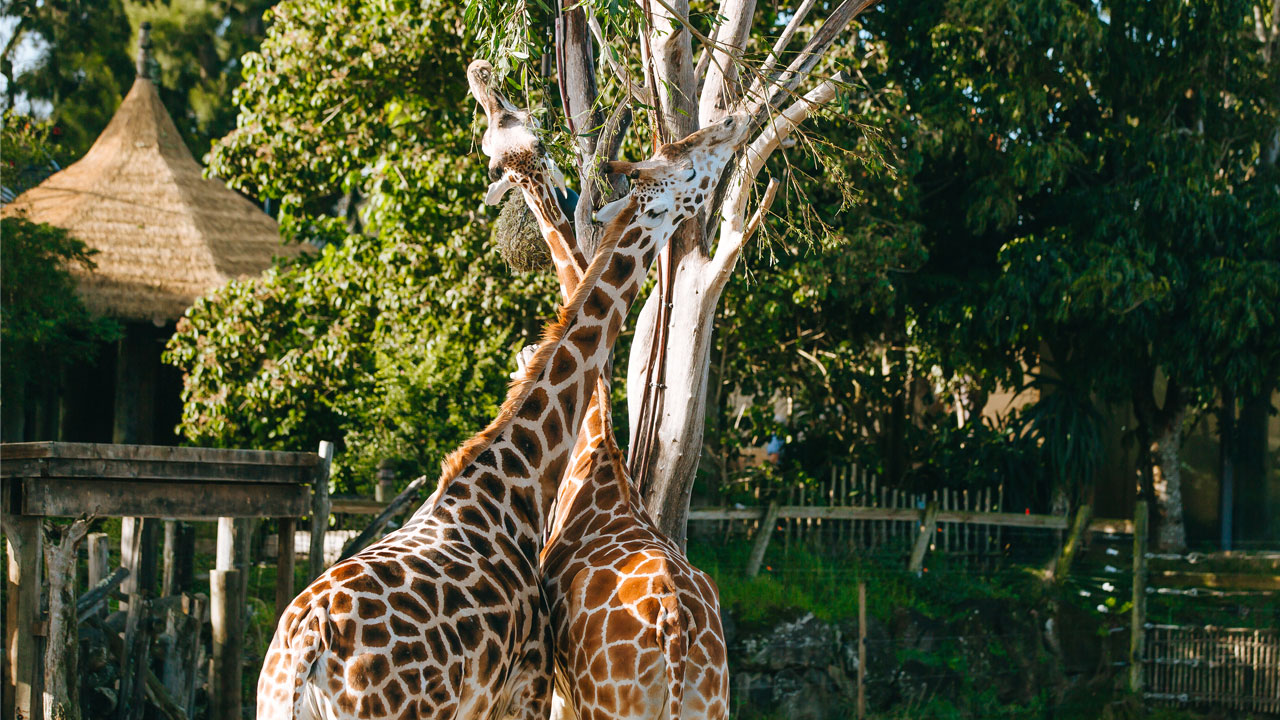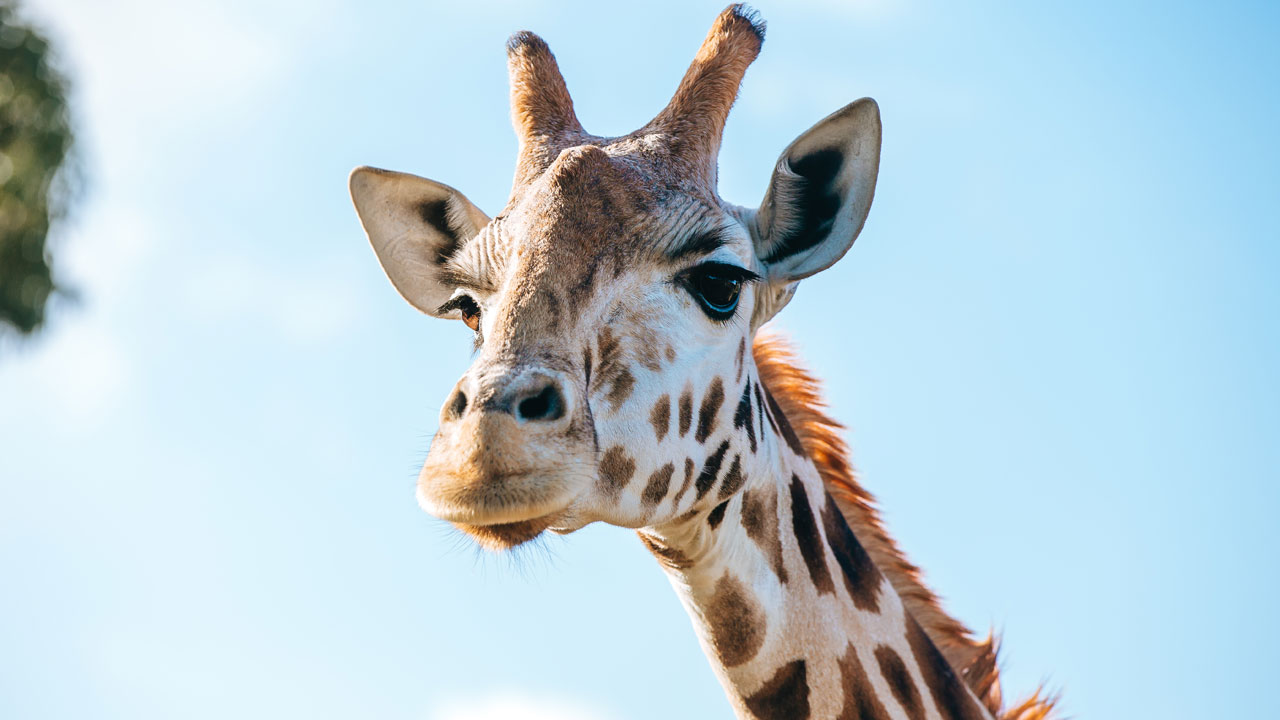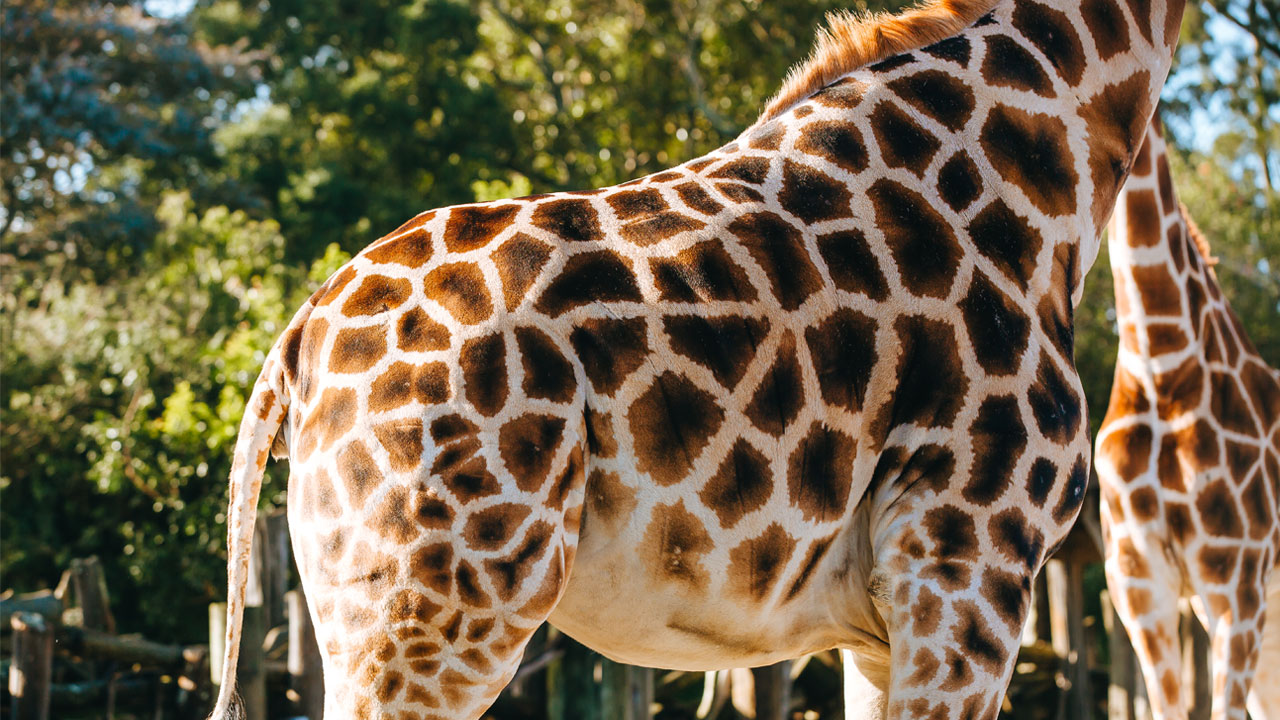While this is Kiraka’s fourth pregnancy, it is her first to three-year-old male Billy, who arrived in 2020 as part of the Zoo Aquarium Association (ZAA)’s Australasian regional breeding and advocacy programme for giraffe. Kiraka’s baby will also be the first giraffe to be born at Auckland Zoo in five years, following the birth of the zoo’s youngest female, Kabili, to Kiraka in 2016.
Billy, already over 4 metres himself, is the offspring of male giraffe Forrest (14), who was born at Auckland Zoo in 2007 and relocated to Australia Zoo in 2009. In 2020, at 5.7 metres (18 feet, 8 inches) Forrest was confirmed by the Guinness Book of Records as the world’s tallest giraffe, so chances are that this new arrival could follow suit!
Ungulates keeper Vicky Smith, who is taking the lead in ‘tactile training’ with Kiraka to help monitor her progress, says confirmation of Kiraka’s pregnancy was achieved through faecal testing to check progesterone levels.
“Progesterone is a hormone that increases during pregnancy, and through collecting faecal samples each month, and sending these to an external laboratory for testing, we’re able to closely monitor these levels to check everything is progressing as it should be,” says Vicky.






